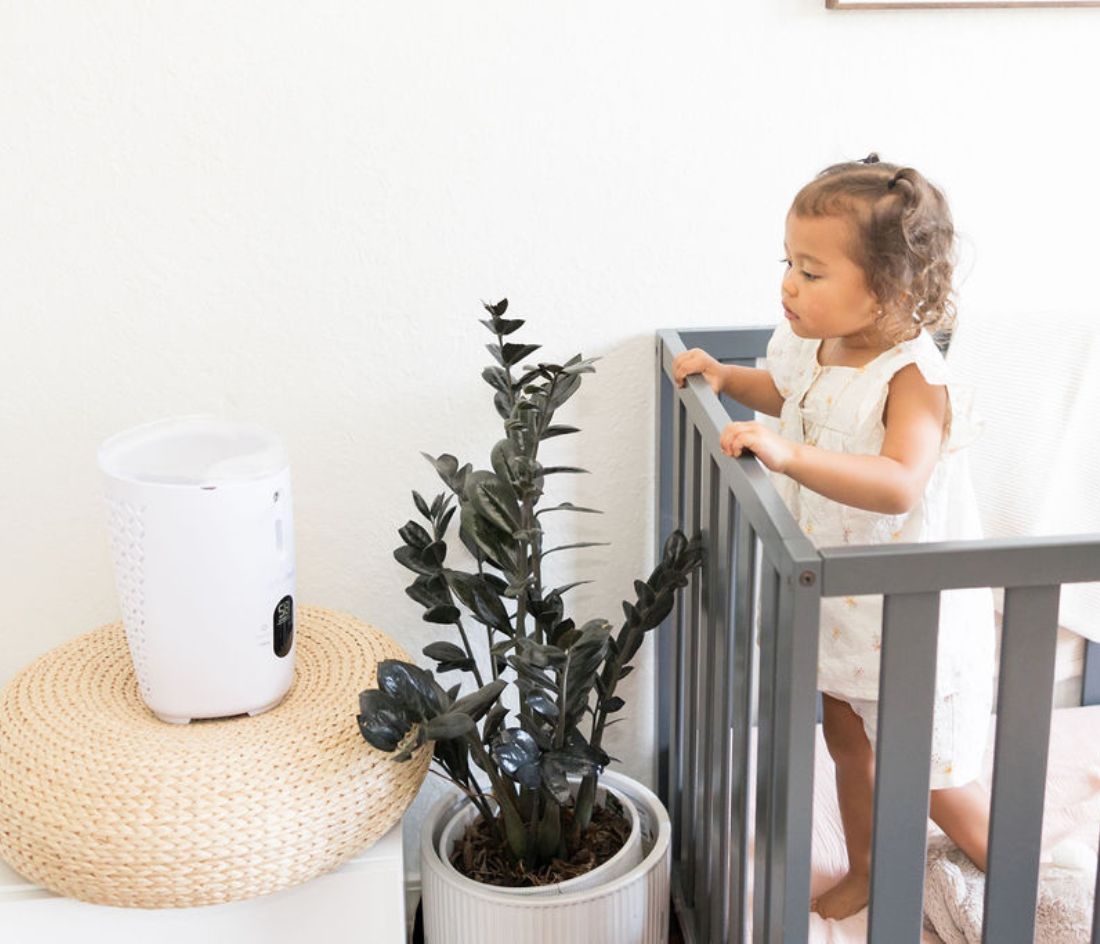When your toddler is sniffling, sneezing, and coughing, it can be miserable for both them and you. So that everyone can feel better and get back to sleep, parents want to quickly identify the culprit: Is it allergies or a cold? In the absence of a fever or news of a cold going around daycare, it can be difficult to diagnose infant allergies vs. cold symptoms. Colds are definitely more common, especially if your child is in daycare. A cold will run its course in a couple of weeks, whereas allergies can persist and require ongoing treatment.

Allergies or a Cold? How to Tell The Difference
But you don’t have to wait two weeks to determine what’s happening with your toddler. Here are some ways to tell if they’re suffering from either allergies or a cold.
Nasal Discharge
According to Steven Goudy, M.D., pediatric ENT and founder of Dr. Noze Best, “The purpose of this mucus is to keep the linings of your nose and sinuses moist, trap dust and other particles you inhale, and fight infections.”
When a cold virus first strikes, our nose makes lots of clear mucus. This helps wash the virus from the nose and sinuses. As the cold continues, however, the mucus becomes progressively thicker and takes on a yellow or green hue. This change in color is likely due to an increase in white blood cells, which could be fighting a viral or a bacterial infection. Nasal drainage, sneezing, and coughing are good indicators of a cold as well.
Mucus resulting from allergies, on the other hand, is more likely to be thinner with a clear, watery appearance. (However, mucus can still be clear with a cold.)
Skin Irritation
Both allergies and viral infections can cause skin irritations. Of course, any rash accompanied by fever, swelling, or pus is also cause for concern and immediate medical attention.

If you notice a patch of scaly or leathery skin that’s irritated and itchy, then it’s a good idea to assess for allergies. If your child has a rash that lasts more than a few days or doesn’t get better with topical ointments, contact your pediatrician immediately. Skin changes that include hives require immediate doctor evaluation.
Viral skin irritations usually only last a few days to a couple of weeks, and they aren’t usually as itchy or painful as those caused by allergies.
Eye Irritation
Baby’s eyes can be irritated with a cold, but red, itchy, watery eyes are common symptoms of allergies. Dark circles under the eyes, known as “allergic shiners,” can be a tell-tale sign of an allergic response.
Breathing Problems
“Babies are obligate nose breathers,” says Dr. Goudy. “They breathe through their nose, almost exclusively, for the first year of life. Nasal congestion impacts breathing and impairs the suck-swallow-breathe rhythm and can make sleeping less comfortable.”
Colds affect not only breathing, but eating and sleeping as well. If your child’s appetite suffers, it’s most likely a viral infection.
However, allergies can also affect breathing. While babies with allergies might have a cough, if it includes wheezing, then there’s the possibility of reactive airway disease otherwise known as asthma, which may or may not be related to allergies. Babies and small children cannot be tested for asthma until they are older and able to comply with breathing tests; until then, the diagnosis of suspected asthma is normally made.
Seasonality and the Environment Considerations

Seasonality is also something to take into account; if the onset of the symptoms coincides with a change in seasons or seems to happen around the same time each year, it’s a good idea to consult your child’s doctor about environmental allergies from indoor or outdoor allergens (things your child is allergic to).
“While environmental allergies typically don’t present until babies are 18 months or older, food allergies can start to appear much earlier,” says Dr. Goudy. Ask yourself the following questions: Is there a history of allergies in the family? Does your baby have to change formula or foods a lot? Answering “yes” to either of these questions can indicate allergies are at play.
More Allergy Symptoms
Allergies have other symptoms in babies and children, such as:
- The inside of child’s nose is swollen
- The back of your child’s throat has a bumpy pattern (“cobblestoning”)
- There is a visible crease on nasal tip (“allergic salute”)
Getting Relief Once You Know If It's Allergies or a Cold
For immediate relief, over-the-counter medications are available to families, but they should only be administered after discussion with your doctor.
If symptoms persist, your doctor might want to test for allergies, especially if there is the possibility of food sensitivities. The evaluation can include a radioallergosorbent (RAST) blood test, which detects specific antibodies to determine what allergens are causing the reaction. Your allergist will determine the course of treatment based on blood and skin test findings. Treatment can include allergy shots, reduction in exposure to potential allergens, adjusting the humidity of the sleeping environment, and the use of nasal saline.
When in Doubt, Call Your Pediatrician
Regardless of whether you’re dealing with infant allergies vs. colds, there’s always someone on call to help you manage your baby’s care at home. Lean on their expertise so that everyone can be feeling better, faster.
We think you will also enjoy these reads:
- How to Prepare For An Early RSV Season
- Signs of Respiratory Distress in Children
- Do You Know The Differences In Children's Allergy Medications?
- 3 Important Tips in Allergy Relief
- Cold Relief Tips From Dr. Noze Best
When in doubt, consult your pediatrician.



